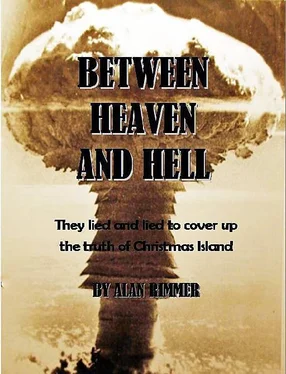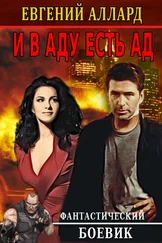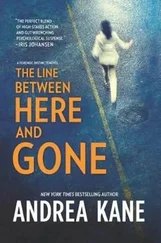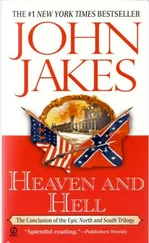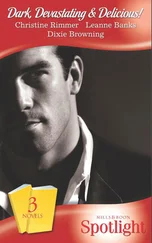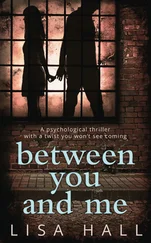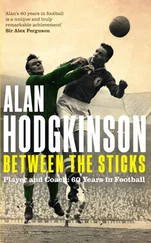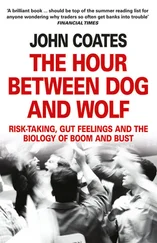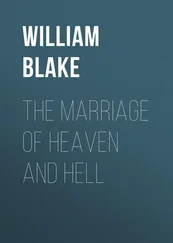Most felt no surprise that other servicemen’s children had been affected. For they had long harboured the suspicion that the atomic bomb was finally reaping its grim harvest.
The story hit the newspapers and there was uproar. Scores more veterans told of problems with their children. But the official guardians responsible for the nation’s health were not impressed.
The Cancer Research Institute and the Medical Research Council both agreed that radiation-induced genetic disorders were entirely possible. Laboratory experiments on mice and fruit flies had proved that conclusively.
But most experts dismissed the reports as ‘alarmist’ and were quick to point out that, two per cent of new-born babies suffered some form of genetic disorder. An article in the prestigious New Scientist magazine dismissed the reports as ‘biased’ because the men had ‘selected themselves’ by volunteering information about problems in their children.
Professor Joseph Rotblat recognised a familiar pattern in the expert’s responses. In an interview he warned about the ‘established scientific caucus’ who were more concerned about protecting their government-funded grants than delving into the tricky waters of radiation-induced genetic effects. “It’s all about money,” he said. “You are not going to get anyone to endorse this. They’ll use Neel and Schull.”
Neel and Schull were two scientists commissioned by the US Government to study the effects on children born after the bombings of Hiroshima and Nagasaki. After a lengthy five-year investigation no evidence of genetic disorders was found in the offspring of survivors.
Despite these official assurances, few people were persuaded. The strictly formal Japanese community shunned survivors of the bomb as being “unclean.” Marriage was often impossible; many families left the city to start a new life elsewhere. Those that did escape eradicated all evidence they had lived in Hiroshima.
A 1965 survey of atomic bomb survivors asked couples if they had experienced “adverse discrimination” in marriage. Of those in the unmarried 35-39 age group, 21.4 per cent reported discrimination. It was hardly surprising, therefore, that few reported incidents of damage to their offspring.
But the Hiroshima/Nagasaki cohort were not the only radiation exposed groups to be studied. Early radiologists who absorbed relatively large cumulative doses such as the New Jersey radium dial painters who in the 1910s and 1920s ingested radioactive materials in the workplace all suffered illness and early death. Uranium miners and patients treated with radiation were other affected groups.
Ionising radiation, the same as produced by atomic bombs, was well known to cause biological changes in both humans and experimental organisms. Academic papers available at the time showed that animals exposed to even very low levels of radiation could produce genetically damaged offspring.
As long ago as 1943 distinguished New York scientist Herman Muller won a Nobel Prize for his research into the genetic effects of radiation and it was generally accepted in scientific circles that radiation could induce mutations in the offspring of animals exposed to radiation.
Other research contained clear and unambiguous warnings about the genetic effects of radiation. World-renowned geneticist Dr D.G. Catcheside hammered home the point in a paper entitled ‘Genetic Effects of Irradiation with reference to Man,’ which he presented to the British Medical Research Council in February 1947.
He wrote: “All organisms investigated viruses, bacteria, fungi, liverworts, flowering plants, drosophila and other insects and mice, show genetic effect as a result of ionising radiations. It is therefore most probable that induced genetic changes, mutation and chromosome changes alike will be induced in man.”
This made the long-term medical studies of the A-bomb’s victims a high priority, for unlike victims of conventional bombings, their bodies’ responses to the effects of the bombs could take decades to appear. All of this makes it even more surprising that Neel and Schull found no evidence of genetic mutation in the offspring of survivors.
In August 1956 Neel and Schull formerly presented their results at the First International Congress of Human Genetics in Copenhagen. Later that year they published them in a paper, tentatively named “The Children of Hiroshima”, but published as “The Effect of Exposure to the Atomic Bombs on Pregnancy Termination in Hiroshima and Nagasaki.”
When the final 1,241-page report was published, they found themselves under attack from the wider scientific community who accused them of not being able to substantiate the results. Two of their most vociferous critics were Stanley Macht director of the Department of Radiology at Washington County hospital in Hagerstown, Maryland, and Philip Lawrence chief of familial studies unit of the Division of Public Health Methods, in the Public Health Service in Hagerstown.
Macht and Lawrence in October 1951 launched a survey of radiologists and other physicians to detect possible genetic effects of radiation. They sent out 8,000 questionnaires, about half to radiologists and half to physicians in medical specialties unlikely to involve exposure to radiation. The questions asked the doctors how many years they had been regularly exposed to radiation through X-Ray diagnosis, radium therapy or use of radioisotopes and whether they had ever been exposed to levels greater than accepted tolerance levels.
They also asked them to describe their reproductive history, number of children, miscarriages, congenital defects and stillbirths. The doctors wanted to find out if there were any anomalies present in their immediate families or those of their partners.
The Macht and Lawrence results indicated that the offspring of exposed fathers had higher rates of abnormalities. These abnormalities were visible in the first generation of offspring, and although the mutations were statistically relatively small, they were alarming enough to warrant further investigations.
Neel and Schull were quick to dismiss the findings, claiming they had the “holy Grail” of research material in the survivors of Hiroshima and Nagasaki. Their reassurances were accepted by most scientists. But further research once again put them on the back foot.
Paul de Bellefeuille, a Canadian Paediatrician who re-analysed the Neel and Schull data found significant genetic effects in some groups. He published two papers debunking the findings, and even suggested that Neel and Schull had attempted to conceal genetic effects in some groups.
De Bellefeuille decided to analyse the offspring of parental pairs in which one parent was heavily or lightly exposed and the other not exposed at all. This analysis revealed significant effects for sex ratio, stillbirth, neonatal death and total loss. He concluded that his new analysis brought out definite indications of genetic ill-effects of atomic radiation, at a high-level of statistical significance.
Neel and Schull also came under attack in Japan. Professor Sudao Ichikawa, a specialist in radiation genetics at Saitama University, claimed the study was deliberately biased. He did his own calculations and discovered he could make Neel and Schull’s information show significant levels of genetic disorders in the children.
In a statement, he said: “It was obvious the figures had been juggled to produce the right answers.”
Little of this important research reached the wider public. This considerable body of evidence should have alerted the British scientific establishment to the fact they were wrong to put so much credence on Neel and Schull. But they chose to ignore it
Prof Rotblat thought he knew why: “The problem is that most scientific and medical institutions, especially in this country, rely heavily on government funding for their research. That would be removed at a stroke if the ‘wrong’ research was produced. Scientists learned a long time ago not to rock the boat. Money always rules the roost.”
Читать дальше
